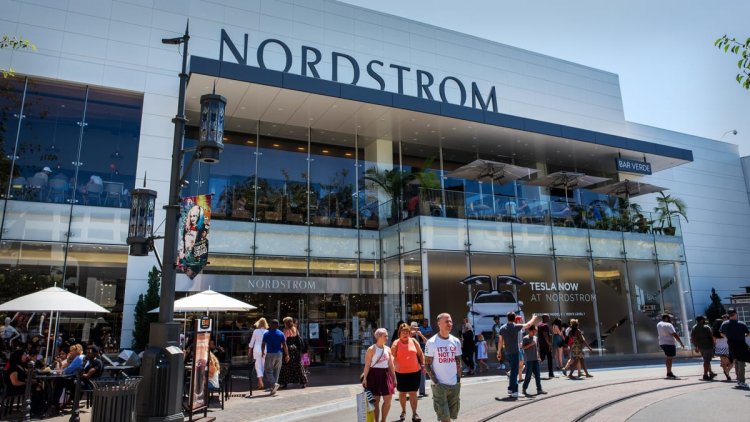The primary reason why U.S. retailers fail in Canada
From Nordstrom to Target, U.S. retailers overestimate their chances in Canada and then prove unwilling to make it work.

From Nordstrom to Target, U.S. retailers overestimate their chances in Canada and then prove unwilling to make it work.
Blame the good natured passivity that Canadians seem to project but Americans have historically perceived our northern neighbors as geopolitical pushovers.
During the Revolutionary War and War of 1812, overconfident American forces invaded Canada, assuming they could easily conquer the territory. Unfortunately for Americans, the Canadians kicked our Yankee butts.
The historical analogy also applies to U.S. retailers. Despite ambitious plans to expand into Canada, American retailers have also experienced humiliating setbacks and defeat.
Nordstrom Inc. (JWN) - Get Free Report recently said it would close all 13 Nordstrom and Nordstrom Rack stores in Canada. The move will cost the luxury department store chain $300 million to $350 million in pre-tax charges for the first quarter and a loss of $400 million in total revenue.
“Despite our best efforts, we do not see a realistic path to profitability for the Canadian business,” chief executive Erik Nordstrom said in the company’s recent earnings announcement.
At least Nordstrom, which entered Canada in 2014, lasted longer than Target Corp. (TGT) - Get Free Report The latter withdrew from Canada in 2015 after just two years, racking up more than $2 billion in losses.
Best Buy Co. Inc. (BBY) - Get Free Report still operates in Canada. But the consumer electronics retailer over the years has significantly pared back its original ambitions. The company also recently said it will lay off 700 employees from its Canadian operations.
On the surface, Canada seems like a no brainer. Total retail sales this year will hit $585 billion, a 23% increase from a decade ago, according to IBISWorld.
The country shares long-standing political, economic, and cultural ties to the United States, with Americans and Canadians regularly crossing a peaceful 5,525 mile border. The two nations are close military allies and field teams in the top professional leagues for basketball, baseball, and hockey.
Three Reasons It's Harder Than it Looks
But Canada has proven more complicated than U.S. retailers had anticipated for the following reasons:
1. Although the country is geographically enormous, about 90% of the population live within 100 miles of the United States. With such density, real estate for warehouses, distribution centers, and stores is relatively scarce. That makes for a challenging supply chain system.
2. The population is diverse and culturally nuanced. Just as California is worlds apart from Texas, British Columbia sharply contrasts with French Quebec. Any retailer who wants to operate in Quebec must know that the province takes its French language and heritage beyond seriously. In the 1990s, Bloc Quebecois, a movement that wanted Quebec to be an independent country, nearly won a referendum on the matter.
3. There is lots of hometown competition. Americans might not be familiar with Canadian Tire, Hudson’s Bay, Simons, Holt Renfrew, and Loblaw but these Canadian retailers run formidable businesses.
“Canadians are loyal to Canadian brands,” said Carol Spieckerman, president of Spieckerman Retail consulting group. “You just can’t cut and paste your U.S. strategy onto Canada.”
That’s not to say that all American retailers fail in Canada. Walmart Stores Inc. (WMT) - Get Free Report for example has done quite well in the country. In 2022, Walmart Canada generated $21.8 billion in sales, a 18.2% gain from 2019.
So what makes Walmart different? The answer is pure commitment.
As it expanded into China, Africa, and Latin America, Walmart absorbed heavy financial losses, operational mistakes, and even corruption scandals. But international expansion has long been a central part of Walmart’s long term growth strategy and the company was determined to see it through.
American Hubris is a Problem
Perhaps other U.S. retailers underestimated the time and effort it would take to expand into Canada, given its geographic proximity and similar status as a rich Western nation.
No matter the country, “it takes years to establish yourself as a brand,” said Canadian-based retail consultant Doug Stephens.
Take Target. Although Canada represented the first time Target expanded into a foreign market, the retailer was supremely confident about its prospects. Plenty of Canadians had already shopped at Target stores across the border.
“Canada was theirs to take,” Stephens said.
But Target’s expectations for instant success led to its undoing. Instead of a gradual approach to gather information and iron out flaws, the company aggressively opened 155 stores at the same time.
“When Target Canada first opened, we knew that many Canadian consumers…had deep admiration for the brand,” CEO Brian Cornell previously said. “But, we missed the mark from the beginning by taking on too much too fast.
“Our stores struggled with inventory issues and we were not as sharp on pricing as we should have been, which led to pricing perception issues,” he said. “As a result, we delivered an experience that didn’t meet our guests’ expectations, or our own. Unfortunately, the negative guest sentiment became too much to overcome.”
Retailers Choose to Cut Their Losses
Like Target, Nordstrom chose Canada to host its first international stores. Though Stephens believes the global pandemic is what really crushed Nordstrom in Canada, he thinks the retailer made some key mistakes.
First, Nordstorm might have overestimated the size of the luxury market in Canada, he said. Secondly, when the pandemic struck, the company had no e-commerce game to compensate for closed stores.
Unlike Walmart, both Target and Nordstrom proved unwilling to sacrifice years of profits to fix flawed international expansions, choosing instead to reinvest in their home markets.
“Canada accounts for less than 3% of our total sales, and we believe we will benefit from a sharper focus on our U.S. business,” Erik Nordstrom told analysts in a conference call.
In other words, just like those early land hungry Americans ultimately concluded: Canada was not worth any more pain.
What's Your Reaction?


























































